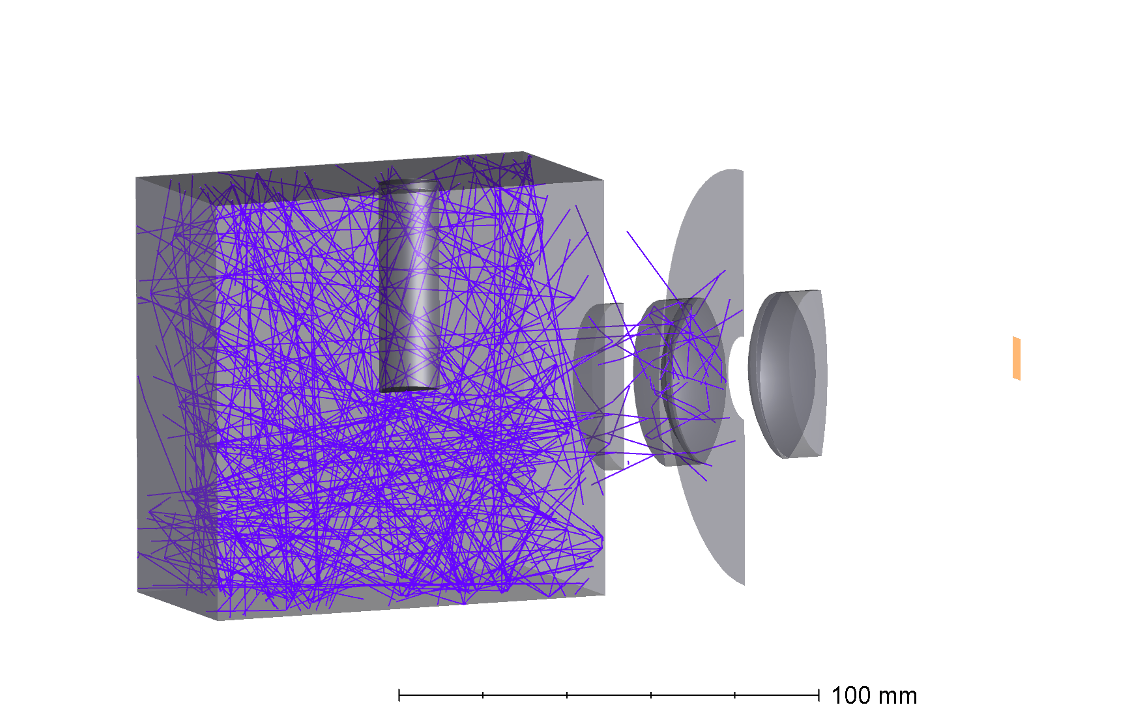Queen Mary joins the LhARA collaboration
Queen Mary became a member of the Laser-hybrid Accelerator for Radiobiological Applications (LhARA) collaboration. LhARA is an innovative biomedical initiative that could revolutionise cancer treatment.

Half-cut view of modelled volume, the proton beam enters via the cylinder from the top. Figure credit Peter Hobson.
A consortium of researchers, clinicians, and engineers, brings together expertise from across the UK to build this world-leading research facility. LhARA will be a hybrid system in which a laser will produce protons and ions to drive a transformation in cancer care by delivering breakthroughs in physics, chemistry, and biology.
Professor Peter Hobson is contributing his expertise in non-sequential ray tracing to develop an optical technique to visualise the energy deposited in a water phantom by a proton beam (typical energy in the range 20 to 100 MeV). He uses Ansys Zemax OpticStudio software to trace billions of light rays inside a “smart phantom” to realistically model the light generated in a liquid scintillator that is subsequently imaged on a camera sensor. Interior surfaces are “black” to minimise the effects of stray light and each of the critical materials has been measured to determine their actual absorbance and reflection at the wavelengths of interest. Prof. Hobson collaborates closely with LhARA colleagues from Imperial College, and the Institute for Cancer Research and the first results of his simulations were shown at the Flash Radio Therapy and Particle Therapy conference, Toronto, 5-7 December 2023.
The work is continuing with the construction of a smart phantom incorporating his optical design as well as ultrasound sensors exploiting the ion-acoustic effect for imaging. We intend to evaluate these at the LION beamline at the Centre for Advanced Laser Applications in Garching near Munich later this year.
A 2020 paper describing the overall LhARA concept is available https://www.frontiersin.org/articles/10.3389/fphy.2020.567738/full
Contact: Professor Peter Hobson, School of Physical and Chemical Sciences p.hobson@qmul.ac.uk